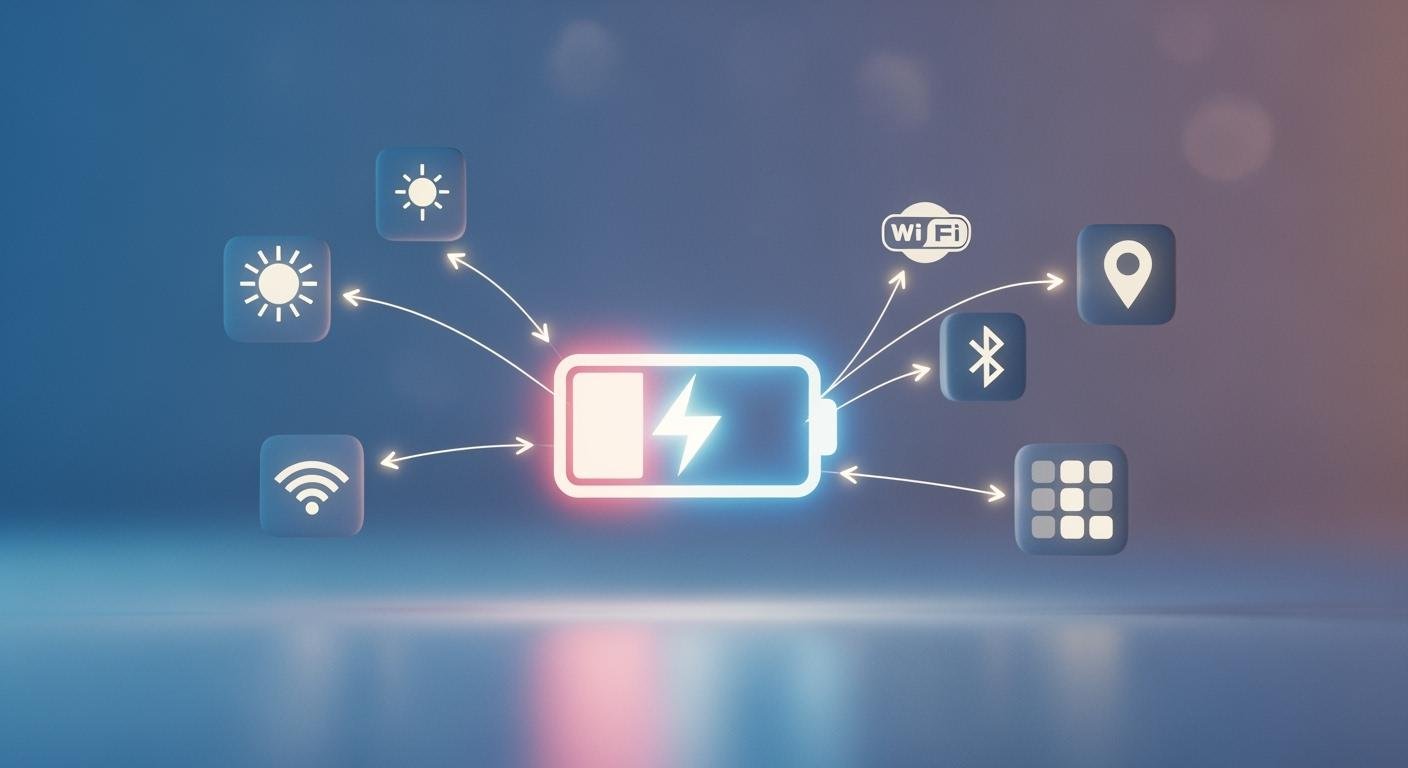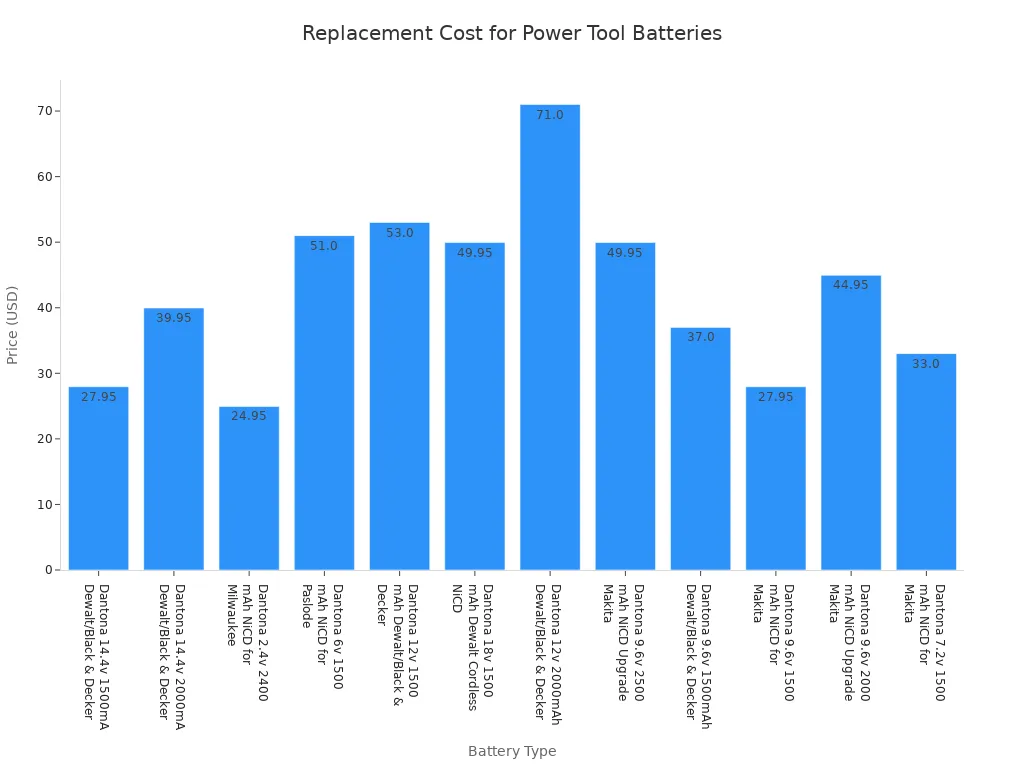
A dead battery can stop your project cold. Over time, power tool batteries also lose their ability to hold a full charge. Replacing these batteries gets expensive, with costs often ranging from $25 to over $70.

Совет: You can improve battery life with a few simple habits. Proper care protects your investment and keeps your tools running longer, saving you money and frustration.
Smart Charging to Extend the Life of Your Power Tool Battery

You can extend the life of your power tool battery if you charge it properly. The right charging technique prevents long-term damage and helps you get the most from your investment. To improve battery life, always charge your batteries in a controlled environment.
Temperature Tip 🌡️ The ideal charging temperature is between 40-105°F (4-40°C). Avoid charging in a very cold garage or a hot truck. After heavy use, let a hot battery cool down for an hour or two before placing it on the charger.
Use the Manufacturer’s Charger
Using the charger that came with your tool is more important than you might think. Original Equipment Manufacturer (OEM) chargers are designed to communicate with your specific battery. This ensures optimal charging and safety. Third-party chargers may be cheaper, but they often lack the technology to protect your battery, leading to a shorter lifespan.
| Характеристика | OEM Chargers | Third-Party Chargers |
|---|---|---|
| Communication | Exchanges data with the battery to adjust charging. | Uses generic profiles that risk battery damage. |
| Temp. Management | Monitors temperature to prevent overheating. | Less effective, increasing risk of failure. |
| Battery Lifespan | Prolongs lifespan by preventing damage. | Can shorten lifespan with improper charging. |
| Особенности безопасности | Includes multiple safety mechanisms. | May have fewer or less reliable safety features. |
| Warranty | Covered by the manufacturer’s warranty. | Often voids the battery’s warranty. |
Avoid Full Drains
Completely draining your lithium-ion battery can cause permanent damage. When the voltage drops too low, it triggers harmful chemical reactions inside. This is why you should recharge your battery when it gets down to around 20% capacity. Allowing a battery to fully die can lead to:
- Irreversible Chemical Reactions: These reactions degrade the materials inside the battery.
- Capacity Loss: The battery will not be able to store as much energy as it once did.
- Permanent Damage: A deep discharge can damage cells, preventing a full recharge.
Unplug When Fully Charged
Modern smart chargers are excellent at preventing overcharging. They monitor the battery’s voltage and stop the charging process once it’s full. Some even switch off completely and only perform periodic checks. However, leaving batteries on a charger for days or weeks is not a good storage solution. It is still best practice to unplug the battery once the charging cycle is complete to extend the life of your power tool battery.
Proper Storage for Power Tool Batteries

How you store power tool batteries during downtime is critical for their long-term health. If you store your battery correctly, you can prevent damage and significantly improve battery life. Proper storage protects your investment from heat, moisture, and unnecessary discharge.
Store in a Cool, Dry Place
You should store power tool batteries in a controlled environment. The ideal temperature is between 50–75°F (10–24°C). Leaving batteries in a hot vehicle or direct sunlight speeds up chemical aging and can permanently reduce their capacity. High humidity is also an enemy. Moisture can cause corrosion on the terminals and may lead to dangerous short circuits.
Storage Tip 💡 A dry basement, an insulated shed, or a closet are great places to keep your batteries safe. Avoid areas with extreme temperature swings.
Keep a Partial Charge During Storage
Never store batteries when they are completely full or empty. A full charge puts stress on the cells, while an empty battery risks falling into a deep discharge state it cannot recover from. The sweet spot for long-term storage is a partial charge of about 40-60%. This level minimizes internal chemical reactions, preserving the battery’s health and capacity over time.
Disconnect from Tools and Chargers
Always remove your battery from the tool or charger before storing it. Even when a tool is off, its internal electronics can create a “parasitic drain,” slowly depleting the battery’s charge. Leaving batteries connected also poses a safety risk. It can lead to overheating, which in rare cases might cause a fire. Unplugging is a simple habit that protects both your equipment and your workspace.
Protect the Terminals
The metal contacts on your battery are called terminals. You must protect them from damage and short circuits. If the terminals touch a metal object like keys or screws, it can create a dangerous electrical connection.
- Use the plastic caps that came with your batteries.
- Place each battery in its original packaging or a plastic bag.
- You can also cover the terminals with non-conductive electrical tape.
Efficient Use for Better Performance
How you handle your power tools directly impacts battery health. You can improve battery life when you use the battery efficiently and reduce unnecessary strain. A great guideline is the “20-80 rule.” Try to keep your battery’s charge between 20% and 80% to minimize stress on the internal cells. This simple habit keeps your batteries in their comfort zone.
Let the Tool Do the Work
Pushing a tool too hard forces it to draw more power from the battery. This increased discharge rate generates significant heat, which damages the battery over time. You are likely forcing the tool if you notice:
- A distinct burning smell from the motor.
- A loss of control or unexpected kickback.
- Weakened power even with a charged battery.
Let the tool’s motor do the work. A sharp blade or bit requires less force and puts less strain on the battery.
Prevent Overheating with Breaks
Heat is a battery’s worst enemy. High temperatures accelerate chemical aging and can cut a battery’s cycle life in half. During demanding jobs, both the tool and battery can get very hot.
Performance Tip ⏱️ To avoid overheating, take short breaks during continuous, heavy use. This allows the battery to cool down, protecting its internal components and preserving its long-term health.
Keep Battery Contacts Clean
The metal terminals on your tool and battery must have a clean connection. Dirt, dust, and corrosion create resistance. This makes it harder for power to flow, forcing the battery to work harder and generating excess heat. You can clean the contacts safely. First, always remove the battery from the tool. Then, use a clean, dry cloth or a soft-bristled brush to gently wipe away any debris.
Rotate Your Battery Stock
If you own multiple batteries, you should rotate them regularly. Using the same battery for every job wears it out quickly while others sit unused. A simple way to track usage is to label your batteries with a number or the date you put them into service. By rotating your stock, you ensure all your batteries age at a similar rate, giving you a more reliable and longer-lasting collection.
You can improve battery life with smart charging, proper storage, and efficient use. These simple habits save you money on costly replacements. They also prevent frustrating interruptions during your projects. You will get more work done with fewer delays.
Start using these tips today. You will protect your power tool investment and keep your projects running smoothly. 🛠️
ЧАСТО ЗАДАВАЕМЫЕ ВОПРОСЫ
Is it really bad to charge a battery when it’s hot or cold?
Yes, temperature matters. Charging a hot battery right after use can cause permanent damage. Charging a very cold battery is inefficient and can also harm its internal cells. Always let your battery reach room temperature before you place it on the charger.
What’s the best charge level for storing my batteries?
You should store your batteries with a partial charge. The ideal range is between 40% and 60%. Storing a battery completely full or empty puts stress on its cells. A partial charge keeps the battery healthy during downtime and helps improve battery life.
Can I use a cheap charger from another brand?
You should avoid using third-party chargers. The charger from the manufacturer is designed for your specific battery. It communicates with the battery to prevent overcharging and overheating. Using the wrong charger can shorten your battery’s lifespan and may void its warranty.
Do new batteries have a “memory effect”?
No, modern lithium-ion batteries do not have a memory effect. You do not need to fully drain them before recharging. In fact, you should avoid deep discharges.
Tip 💡 Recharge your battery when it reaches about 20% capacity to keep it in optimal condition.

